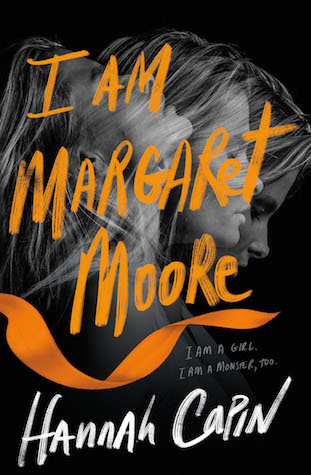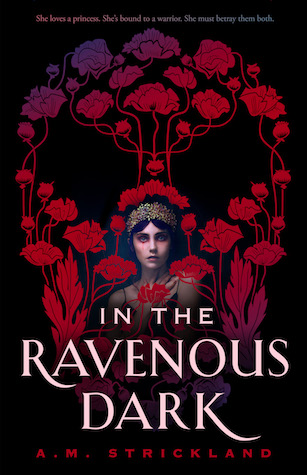
TL; W[on’t]R[read the review]: This is a weird, lyrical, complex book. It won’t be for everyone, but if you’re into girl groups, revenge, and a slow-burn mystery with supernatural elements, consider this one.
**Content warnings are at the end, in the spoiler section. My memory’s not great, so they’re never comprehensive. I’d recommend searching other places for a fuller list.**
Summary [courtesy of Goodreads]: I am a girl. I am a monster, too. Each summer the girls of Deck Five come back to Marshall Naval School. They sail on jewel-blue waters; they march on green drill-fields; they earn sunburns and honors. They push until they break apart and heal again, stronger. Each summer Margaret and Rose and Flor and Nisreen come back to the place where they are girls, safe away from the world: sisters bound by something more than blood. But this summer everything has changed. Girls are missing and a boy is dead. It’s because of Margaret Moore, the boys say. It’s because of what happened that night in the storm. Margaret’s friends vanish one by one, swallowed up into the lies she has told about what happened between her and a boy with the world at his feet. Can she unravel the secrets of this summer and last, or will she be pulled under by the place she once called home?
Note: This review is based on an eARC from NetGalley and Wednesday Books [St. Martin’s].
Ok, so I read this forever ago, when it was first available on NetGalley with a projected October 2021 release date. Then the release got pushed back to March of this year, and THEN I went on a blog hiatus because working in a bookstore made maintaining a book blog harder than I’d thought it would be. And now…here we are, over a year after I read it…and I think it still holds up (despite what most of Goodreads thinks). So, without further ado, the review…
This book is WEIRD, and for the most part I loved it. It’s a very literary meditation on girlhood, friendship, toxic masculinity, and (cis)heteropatriarchy, partly cloaked as a YA horror/thriller. And it is a thriller, in some ways, but not a particularly traditional one (at least not most of the time). There is a central mystery, and there is a supernatural element (that’s spoiled in the tags on Goodreads, if nothing else), but the meditative quality and the poetic, recursive writing style solidly undercut any edge-of-your-seat reading experience for the majority of the novel. It seems like a lot of reviewers have had issues with the writing style, so do go into this book forewarned that it’s not to every taste (though what book is?). However, I found the style immensely readable and generally immersive, meaning it almost never became so purple or pretentious that it pulled me out of the narrative.
This is essentially the story of four girls who’ve deeply bonded over a series of summers at a naval academy-camp: Margaret, our main character, a poet and romantic; Rose, the privileged and assertive legacy student; Flor, the daughter of a Venezuelan general; and Nisreen, a biracial Jordanian horse-girl (also Flor’s lover). While these four characters might not be the most-well developed YA teens ever, I loved the depth of their relationship(s) and the way romantic love complicates but never fractures their bonds.
It’s also the story of the previous summer; the group are in their final summer at the naval academy, and something terrible and shrouded in secrecy happened last year in the middle of a storm, causing Margaret to leave and her entire Deck (cabin) to be sent home. Now, everyone blames Margaret except her friends, who protect her and her reputation with everything they have.
I can’t really do justice to this book, which I think is a truly fascinating study in gendered expectations, belonging, betrayal, grief, and anger. Thematically, it’s incredibly rich. Lyrically, it borders on lush. And literarily-speaking, this is the kind of book that would work well in a classroom setting; it’s a book that begs to have all of its allusions and tropes picked apart. From the life cycle of a mayfly, whose names give the book sections their titles, to a more modernist play with recursive, repetitive writing, Capin is doing a lot here for a YA book. (The way the novel uses “we” vs. “I” is worth an entire academic paper, imo, and there are shades of To the Lighthouse scattered throughout.) And she’s also playing with Hamlet, which comes up explicitly as the characters read it in the background, in really unique and surprising ways. (This Shakespeare riff echoes her previous novel Foul is Fair which contorts Macbeth into a FUCKING AMAZING rape-revenge story that I will never get out of my head.)
But further discussion of this book, and how it deploys its angry girl(s), gets into
SPOILER TERRITORY
The novel reveals what happened the previous summer, and why everything is a little ‘off’ during the current summer, in fits and starts, and it isn’t really until two-thirds of the way through that we get most of the picture. Basically, during the previous summer, Margaret was hiding a year-long relationship with the camp golden boy, at his urging. Soon after the summer began, she learned that he was cheating on her and that he never intended to truly commit to their relationship, since she’s only solidly upper-middle-class, not filthy rich and legacied. Unfortunately, that same day she also learned that she was pregnant. When she tried to confront golden boy about the situation, he raped her on the practice field in the middle of the night. (The scene is very disturbing but not explicit, as Margaret partially dissociates during it and throughout the novel.) Soon after, Margaret and golden boy’s parents find out about the pregnancy, and golden boy’s father behaves atrociously and insists that no one can know his son was involved. Margaret’s shitty, SHITTY parents acquiesce, insisting that Margaret go live with her spinster aunt until the baby is born and adopted out. The night before the big annual boat race (which Margaret’s cabin is expected to win, as usual), Margaret’s parents insist she leave, but she’s lured onto a boat in the middle of a storm by golden boy, who promises (very unconvincingly) he’ll run away with her. They row over to her family’s summer cottage, where (here comes the twist) he convinces her to drink rat poison to abort the baby, telling her he knows someone who survived the process just fine. He is (obviously) lying, and Margaret dies in agony. (Note that since the novel is entirely told in first-person, we do get the embodied play-by-play of this, though it doesn’t go as deeply into body horror as it might.)
So, Margaret has been dead all along, which explains why she seems so dissociated from the action and plot during the ‘current’ year. Very Shyamalan. The novel reveals her death (and the supernatural element of the novel) when not-yet-revealed-to-be-spirit Margaret returns to her family cottage and finds her body under splintered floorboards. This is also, arguably, where the novel firmly enters the realm of horror and leaves any veneer of realism after blurring the boundary throughout. In the world of the novel, Margaret’s body was never discovered, and her death was deemed an accidental drowning. Once her spirit realizes what happened (i.e. finally processes her trauma), she’s out for vengeance. (Well, some of the time…some of the time she’s in an understandable existential crisis, and the recursive writing in those sections does make the book drag.) She begins to chant, off and on, “I am a loaded gun.”
My FAVORITE part of the book comes almost at the very end, when, through a herculean act of existential energy, spirit Margaret manages to notify her grieving friends (who never believed she drowned) that golden boy murdered her, and that they should respond in kind. Which they do, secretly drowning him in the middle of the lake the very next night. (Am I bloodthirsty? Maybe. Is it nice to see a revenge-fantasy where the men are punished and the women aren’t, given the miserable state of our ‘justice’ system? YES.)
And, since this is a thriller, there’s a FINAL twist, revealed gradually over the last third of the novel: all of these events took place over 50 years ago, and the memory of Margaret Moore has lived on in Deck Five lore. Legacy student Rose kept up her dead friend’s memory, and spirit Margaret witnesses modern girls all “wear[ing] a double M for Margaret Moore.” They also all know about golden boy’s murderous ways, even if the official story remains that he drowned untarnished. This final reveal does make sense of some anachronistic or at least confusing plot elements (such as the reaction everyone has to Margaret’s pregnancy), but it also provides another fairy-tale ending predicated on white privilege. As I said before, I’m all for the legacy of an avenged and rightfully-remembered rape-and-murder victim, but the level of Margaret’s legacy (going on 50+ years), and her spirit’s empowered anger, really do add up to a fairy tale (perverse as it is) that still only belongs to white girls. This novel unintentionally reaffirms that idea, just as it reaffirms the idea that YA stories in general belong to cis, generally straight white girls. The ‘50s setting (and the wealthy naval academy) do a lot to explain the overall whiteness of the novel, and Flor and Nisreen’s identities as POC are explored somewhat (though they’re both quite possibly white-passing), but the bulk of the story belongs to white kids. Again. Which is a bit disappointing.
As a final note, while the majority of the novel is focused on heterosexual relationships (since it’s focused on toxic and violent masculinity and cis girls’ victimization), the ocassional focus on Flor and Nisreen’s forbidden love was deeply moving and beautiful. I loved spirit Margaret’s (bittersweet) comment at the very end of the novel that the pair were reunited and moved in together fifty years later, after a lifetime apart. (I highly recommend Tee Franklin’s graphic novel Bingo Love if you want a MUCH happier version of this narrative arc.)
And as a final, FINAL note, I wanted to say something about the last words of the novel. Margaret’s spirit, having fully self-actualized or something, exclaims:
“And I am here, I am here, I am here–!
I am gone.
It is summer again and we are alive.”
The insistent “I” goes away, after repeatedly asserting itself. But then, “we” come back, alive, and the cycle restarts, the novel ending with the exact same line as it begins with. I’m not entirely sure how to interpret that (as hopeful or despairing or along some other axis altogether), but I find it fascinating.
Content warnings: sexual assault, unwanted pregnancy, poisoning, insects, drowning
Imperialism rating: No one ever talks about the implications of being at a naval school, even if it is only for summer camp. Alumni who died in wars are mentioned repeatedly, though.


